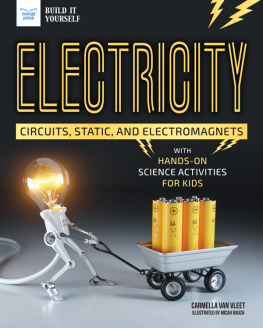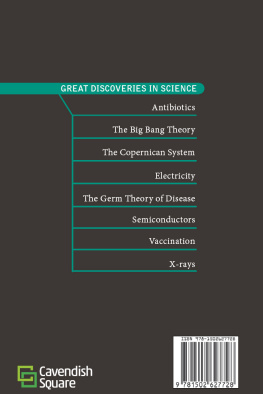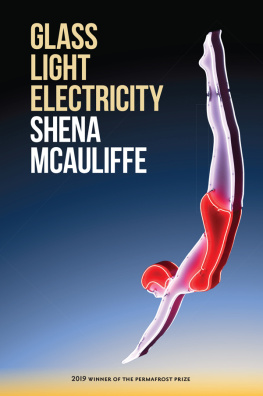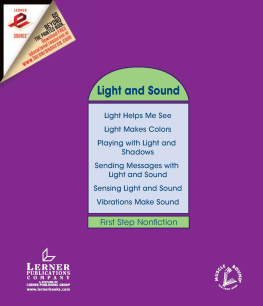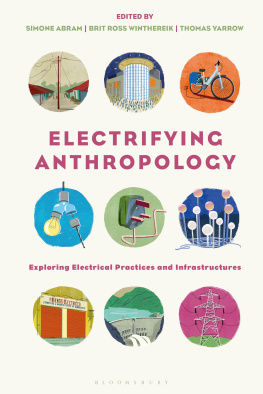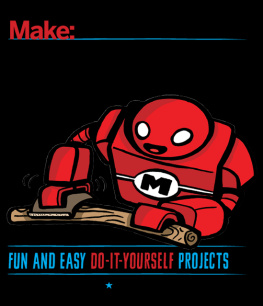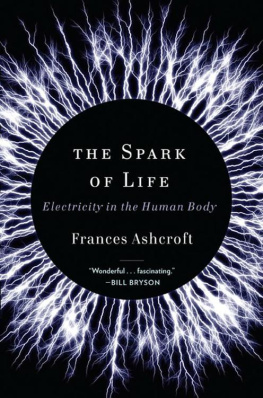Title Page HOW TO BE BRILLIANT AT ELECTRICITY, LIGHT AND SOUND Colin Hughes Winnie Wade Publisher Information Originally published by Brilliant Publications, 1 Church View, Sparrow Hall Farm, Edlesborough, Dunstable, Beds., UK, LU6 2ES Digital version converted and published in 2011 by Andrews UK Limited www.andrewsuk.com Written by Colin Hughes and Winnie Wade Illustrated by Kate Ford Cover photograph by Martyn Chillmaid Printed in UK by Brilliant Publications Colin Hughes and Winnie Wade 1997 First published in 1997, Reprinted 2003 The right of Colin Hughes and Winnie Wade to be identified as authors of this work has been asserted by them in accordance with the Copyright, Designs and Patents Act 1988. Certain indicated sections may be printed/photocopied by individual teachers for class use, without permission from the publisher. The materials may not be reproduced in any other form or for any other purpose without the prior permission of the publisher. Introduction How to be Brilliant at Electricity, Light and Sound contains over 40 photocopiable sheets for use with children working at levels 2-5 of the National Curriculum (Scottish levels C-E). The activities are designed to help children develop the scientific knowledge and understanding of these topics. They can be used whenever the need arises for particular activities to support and supplement your existing scheme of work for science.
The activities provide learning experiences which can be tailored to meet individual childrens needs. The activities are addressed directly to the children. They are self-contained and many children will be able to work with little additional support from you. You may have some pupils, however, who have the necessary scientific skills and concepts, but require your help in reading the sheets. Pupils should be encouraged to use the sheets for all aspects of communicating their work. Most of the activities require basic classroom science resources and these are listed in the What you need box on each sheet.
Some of the sheets require the use of an additional resource sheet. Where this is the case, an interactive link to the resource sheet is provided. Links to the National Curriculum How to be Brilliant at Electricity, Light and Sound relates directly to themes 1 and 3 of the programmes of study for Physical Processes. gives details of those elements of the programme of study that are covered. Links to the National Curriculum How to be Brilliant at Electricity, Light and Sound supports the following elements of the Physical Processes programme of study. 3Light and soundeveryday effects of light athat light travels from a source; bthat light cannot pass through some materials, and that this leads to the formation of shadows; cthat light is reflected from surfaces, eg mirrors, polished metals; seeing dthat we see light sources, eg light bulbs, candles, because light from them enters our eyes; vibration and sound ethat sounds are made when objects, eg strings on musical instruments, vibrate but that vibrations are not always directly visible; fthat the pitch and loudness of sounds produced by some vibrating objects, eg a drum skin, a plucked string, can be changed; gthat vibrations from sound sources can travel through a variety of materials, eg metals, wood, glass, air, to the ear. 3Light and soundeveryday effects of light athat light travels from a source; bthat light cannot pass through some materials, and that this leads to the formation of shadows; cthat light is reflected from surfaces, eg mirrors, polished metals; seeing dthat we see light sources, eg light bulbs, candles, because light from them enters our eyes; vibration and sound ethat sounds are made when objects, eg strings on musical instruments, vibrate but that vibrations are not always directly visible; fthat the pitch and loudness of sounds produced by some vibrating objects, eg a drum skin, a plucked string, can be changed; gthat vibrations from sound sources can travel through a variety of materials, eg metals, wood, glass, air, to the ear.
In addition, the requirements in the following section of the programme of study (National Curriculum, 1995) apply across the Physical Processes. Pupils should be given opportunities to: 1Systematic enquiry aask questions related to their work in science; buse focused exploration and investigation to acquire scientific knowledge, understanding and skills; cuse both first-hand experience and secondary sources to obtain information; duse IT to collect, store, retrieve and present scientific information. 2Science in everyday life ause their knowledge and understanding of science to explain and interpret a range of familiar phenomena; bconsider the part science has played in the development of many of the things that they use; crelate their understanding of science to their personal health; dconsider ways in which living things and the environment need protection. 3The nature of scientific ideas aobtain evidence to test scientific ideas in a variety of ways; brecognize that science provides explanations for many phenomena. Pupils should be taught to: 4Communication ause appropriate scientific vocabulary to describe and explain the behaviour of living things, materials and processes; buse standard measures and SI units, eg metre, newton, appropriate to their work; cuse a wide range of methods, including diagrams, drawings, graphs, tables and charts, to record and present information in an appropriate and systematic manner. 5Health and safety arecognize and assess the hazards and risks to themselves and others when working with living things and materials; btake action to control these risks.
Programme of Study References
| PoS Reference |
| What uses electricity? | P/1a (KS1) |
| Beware - electric items may be dangerous! | Gen PoS 5a and 5b |
| How does electricity pass through the bulb? | P/1a |
| Electricity pathways | P/1a; M/1c |
| Make your own electric circuit quiz board | P/1a |
| Putting bulbs and buzzers in circuits | P/1a |
| Making switches | P/1b; P/1a |
| Morse code | P/1b; P/1a |
| Design a set of model traffic lights | P/1a; P/1b |
| How bright? | P/1c; P/1a |
| The lifting nail - electromagnets | P/1c;P/1a |
| Drawing circuits | P/1d; P/1a |
| Circuit diagams using symbols | P/1d; P/1a |
| Make a lighthouse | P/1b; P/1d; P/1a |
| Electricity detective | P/1d; P/1a |
| Light in our lives | P/3a |
| What makes a shadow? | P/3b |
| When are shadows formed? | P/3b |
| Who's who? | P/3b |
| Reflections | P/3c |
| Writing with mirrors | P/3c |
| Comparing images | P/3c |
| Tall mirrors - do you need them? | P/3c |
| Make a periscope | P/3c |
| Seeing the light | P/3d |
| Light quiz | P/3c; P/3b |
| Different sounds | P/3e |
| Bottle music | P/3e |
| Bang the drum | P/3e; P/3f |
| Pan-pipes | P/3e; P/3f |
| Scrapers | P/3e; P/3f |
| Musical notes | P/3f |
| Making sounds | P/3f |
| Make a speaking tube |
Next page

